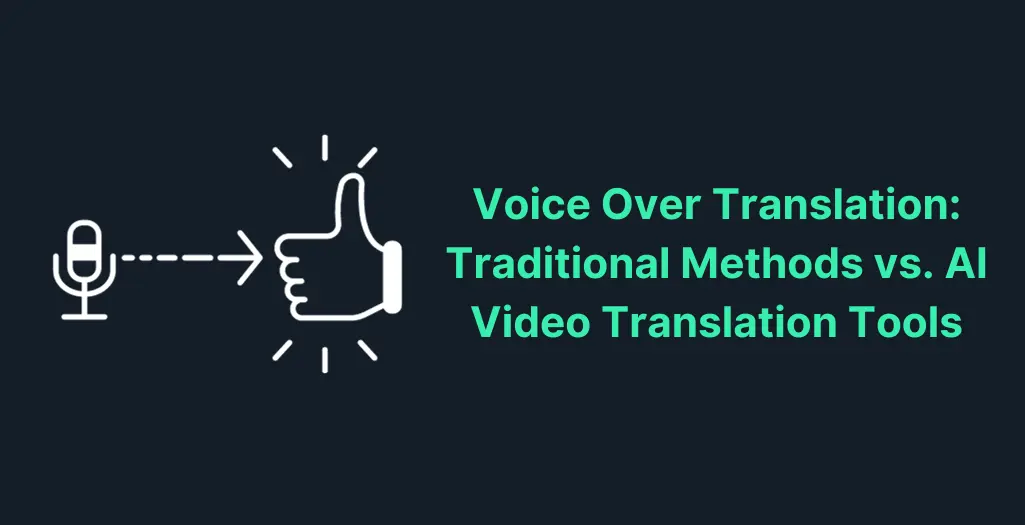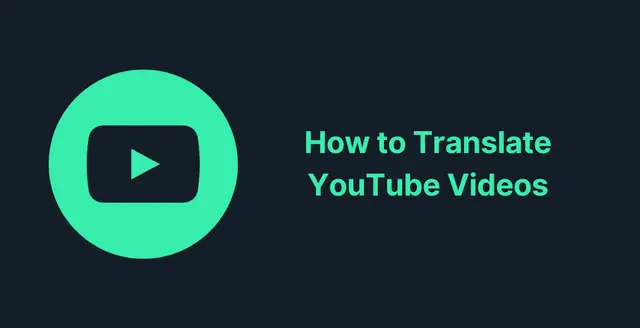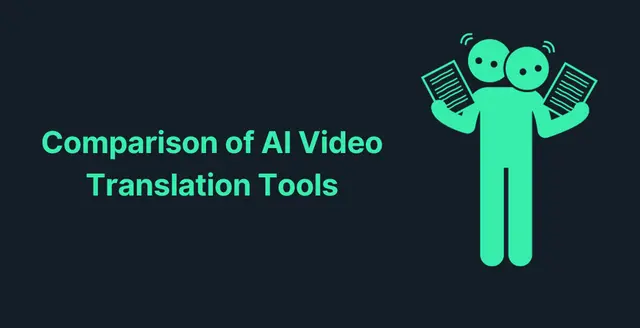In our increasingly connected world, the demand for voice over translation has skyrocketed. Whether it’s for international marketing, e-learning courses, or global entertainment, the ability to translate voice overs effectively bridges the gap between languages and cultures. Traditionally, this task has been handled by hiring freelancers or specialized agencies, each offering their unique blend of quality and expertise. However, this often comes with significant costs and time investment.
But the landscape is shifting. Advances in technology have introduced a new player: AI-powered tools. These innovative solutions promise to deliver quality translations with natural-sounding voices, all within minutes and at a fraction of the cost. Among these, VideoDub stands out as a prime example of how AI is revolutionizing voice over translation.
In this article, we’ll explore the traditional methods of voice over translation and compare them with the modern, AI-driven approaches, focusing on the efficiency, cost, and quality they bring to the table.
The Traditional Approach to Voice Over Translation
Hiring Freelancers (Fiverr, Upwork)
Traditionally, one popular way to get voice over translations done is by hiring freelancers on platforms like Fiverr or Upwork. This method allows for a wide selection of professionals with various language skills and voice over expertise. One of the main benefits of hiring freelancers is the personalized service they offer. Clients can choose a freelancer whose voice, style, and delivery match their specific needs. Additionally, there's potential for high-quality output, especially when working with experienced voice artists who understand the nuances of both the language and the subject matter.
Working with Specialized Agencies
Another traditional method involves working with specialized agencies dedicated to providing voice over translation services. These agencies typically boast a roster of professional voice artists and translators, ensuring a high level of quality control. The benefit of using an agency lies in their reliability and the structured process they follow, which often includes rigorous quality checks and adherence to industry standards. Agencies are particularly suitable for large-scale projects or when requiring translations in multiple languages, providing a one-stop solution for comprehensive voice over needs.
Challenges of Traditional Methods
Cost Considerations
One significant challenge of traditional voice over translation methods, whether through freelancers or agencies, is the cost. Freelancers might charge premium rates depending on their expertise and the complexity of the language pair. Similarly, specialized agencies often have higher fees due to their comprehensive service offerings, including quality checks and project management. These costs can quickly escalate, especially for projects requiring multiple languages or specific dialects. For small businesses or individual creators, these expenses can be a substantial part of their budget, making the process financially demanding.
Time Constraints
Another challenge lies in the time it takes to complete projects using traditional methods. Freelancers, while flexible, may have other commitments that extend turnaround times. Agencies, on the other hand, have structured processes that, while ensuring quality, can add to the project timeline. This includes time for auditions, recording, editing, and quality checks. In an era where speed is often as crucial as quality, these time constraints can be a significant drawback, especially when content needs to be released in sync with time-sensitive events or trends.
The Rise of AI in Voice Over Translation
The Technological Revolution
The field of voice over translation is witnessing a significant shift with the advent of AI tools. This technological revolution is marked by the integration of advanced AI algorithms and natural language processing techniques. These tools have opened new possibilities in how voice over translations are performed, making it more accessible and streamlined. AI-driven platforms can process large volumes of content quickly, translating and syncing voice overs in multiple languages with impressive accuracy. This innovation is not just a leap in technology but also a catalyst for greater inclusivity in content creation.
Advantages of AI Tools
AI solutions in voice over translation stand out for their speed, affordability, and efficiency. Unlike traditional methods that involve manual labor and time, AI tools can translate and produce voice overs in a fraction of the time. This speed is crucial for businesses and creators who need to respond quickly to market demands. Additionally, AI tools are generally more affordable, removing the high costs associated with professional agencies or freelance experts. The efficiency of these tools doesn't just lie in speed and cost but also in the consistent quality they can deliver, making them an increasingly preferred choice in the industry.
Case Study: VideoDub.io
How VideoDub.io is Changing the Game
VideoDub stands out as a prime example of how AI technology is revolutionizing voice over translation. This platform utilizes advanced AI algorithms to provide high-quality, automated voice overs in various languages. The tool's ability to quickly translate and sync voice overs makes it a powerful asset for content creators and businesses looking to reach a global audience. The quality of AI-generated voice overs from VideoDub.io is impressive, offering natural-sounding, human-like voices that can cater to different styles and tones. Additionally, the wide range of languages supported by VideoDub.io opens up new opportunities for content localization and international reach.
VideoDub.io in Action
VideoDub.io is particularly effective in scenarios where quick turnaround and cost-effectiveness are priorities. For instance, educational content creators can use VideoDub.io to translate and voice over their courses for international students, enhancing accessibility. Marketing teams can leverage the tool to localize advertisements and promotional videos, ensuring their message resonates with different linguistic groups. Furthermore, for online content creators, VideoDub.io offers a fast and affordable way to diversify their audience by making their videos accessible in multiple languages. This adaptability and efficiency make VideoDub.io a valuable tool in any content creator’s toolkit.
Comparing the Old and the New
Quality Comparison
When it comes to the quality of voice overs, traditional methods and AI tools each have their strengths. Traditional methods, involving human voice actors, are known for their natural inflection and emotional range, which can be critical for certain types of content. However, modern AI tools like VideoDub.io have made significant strides in replicating natural speech patterns and emotions, narrowing the gap in quality. AI-generated voice overs now offer a level of naturalness and versatility that can rival traditional methods, especially for straightforward, informative content.
Cost and Time Efficiency
The contrast in cost and time efficiency between traditional voice over translation methods and AI tools is stark. Traditional methods, while offering high-quality results, are often more expensive due to labor and time-intensive processes. This includes costs for talent, studio time, and production. On the other hand, AI tools provide a more cost-effective solution, eliminating many of these overhead expenses. In terms of time efficiency, AI tools are unmatched, capable of translating and producing voice overs in minutes or hours, compared to days or weeks for traditional methods. This speed and cost-efficiency make AI tools like VideoDub.io an attractive option for businesses and content creators who need quick, affordable voice over translations.
Conclusion
In summary, while traditional methods of voice over translation offer quality and authenticity through human expertise, they come with higher costs and longer turnaround times. In contrast, AI video translation tools like VideoDub are transforming the landscape with their ability to provide rapid, cost-effective, and high-quality translations. The advancements in AI technology have narrowed the quality gap between human and machine-generated voice overs, making these tools a viable option for a wide range of applications. The potential of AI in making voice over translation more accessible and efficient is clear, marking a significant shift in how we approach multilingual content creation.


